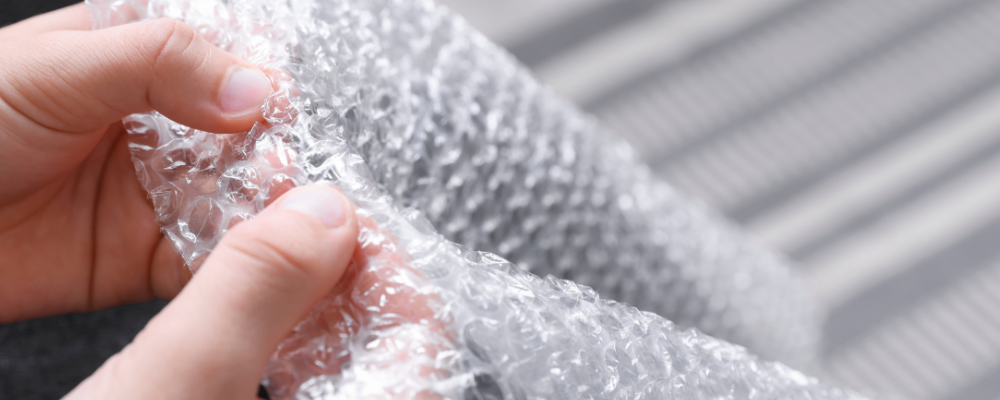By John McInerny | September 19, 2023 0 Comments

What Kind of Protective Packaging Should I Use for My Product?
During the shipping process, products can be easily damaged, resulting in wasteful costs and loss of revenue-inducing customer dissatisfaction. Protective packaging was designed to help avoid product damage by cushioning, isolating or securing items during shipping. Protective packaging is essential for protecting your product from shocks, impacts, vibrations, and other unexpected events that can occur during shipment. To be sure your products are carefully protected during transport, it is necessary to choose the right kind of protective packaging for the job. In this blog post, we will tell you all about why investing in quality protective packaging matters, what types of materials are best suited for protecting different kinds of products during shipment, and tips on how to determine which type is most suitable for your needs.
Identify the type of product you will be shipping
Before you can begin to determine what kind of protective packaging is needed, it’s important to identify and understand the type of product you’re shipping. Consider factors such as size, weight, fragility, sensitivity to temperature or humidity, and other characteristics that may influence how the item should be packaged for safe transport. Think about whether your product needs additional cushioning, insulation, or other protective elements to keep it secure and safe during transit. These details will help you choose the appropriate packaging materials for your product.
The Benefits of Each Protective Packaging Material
When it comes to shipping fragile items, extra protection is a must-have. Luckily, there are numerous options to choose from depending on your needs. Bubble wrap, for example, is a classic choice that many people are familiar with. Its air-filled bubbles provide cushioning and protection from impacts during shipping. However, if you're looking for a more eco-friendly option, bubble-on-demand may be the way to go. This sustainable alternative allows you to create custom-sized air pockets as you need them, eliminating the need for excess packaging materials. Foam on a roll is another popular choice, offering a bit more structure and support than bubble wrap. If looking for maximum protection, Foam in Place is the best option. Foam in Place molds to the shape of your item, ensuring a snug and secure fit during transit. When looking for an alternative for Foam in Place, consider using Paper products for blocking and bracing. This method uses thick paper to add a layer of cushioning to your products. It is a great way to be eco-friendly while still ensuring your items are adequately protected during shipping. Not only do these materials provide extra cushioning, but they are also made from renewable resources and can be recycled after use. No matter which protective packaging material you choose, investing in proper packaging is an important step to make sure your items arrive safely and intact.
Consider the size and weight of your product when selecting packaging
The size and weight of a product can influence the packaging requirements you will need to fulfill. When considering the size and weight, it is important to make sure that the protective packaging you select is capable of adequately protecting it during transit. If your product is large or heavy, Foam in Place or Paper for blocking and bracing are the best options because of their superior protection capabilities. You want to be sure that your packaging can provide the extra cushioning and support needed to ensure its safe delivery. Additionally, if your product is small or lightweight, you don’t want to overpack it, as this could result in additional shipping costs. To avoid these problems, make sure you are selecting the right packaging based on your product's size and weight. Taking into account these factors when choosing your protective packaging will help ensure that your product don't endure damage during transit.
Understand proper cushioning techniques to secure the item during transit
When it comes to cushioning the item for shipping, there are a few key things to keep in mind. Begin by selecting a material that will provide ample protection and cushioning while also being lightweight so as not to add extra weight and cost to the shipment. Place the cushioning strategically around the item, making sure the item is firmly held in place on all sides. For particularly fragile items, consider using multiple layers of cushioning for added protection. Additionally, inspect the item and its packaging before shipment to ensure that all of the components are secure and protected from damage. By taking these steps and utilizing proper cushioning techniques, you can be sure your item arrives safely at its destination.
In conclusion, it is essential to invest in proper protective packaging for your product when shipping. Taking the time to choose the right option and properly cushion your item will ensure that it arrives safely at its destination. You can select from a variety of options such as bubble wrap, bubble-on-demand, foam on a roll or Foam in Place depending on your item's size and weight. Ultimately, protective packaging materials are an effective solution to keep your items safe while in transit. Investing in the right type of packaging and cushioning is key for keeping your products safe and secure.
Contact one of our protective packaging specialists today to learn more about which option will best suit your needs!

About the Author: John McInerny
Need Help?
Increase your productivity with entry-level of full-line packaging automation, reduce packaging costs, and increase product protection with a full catalog of packaging supplies.